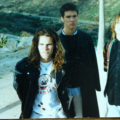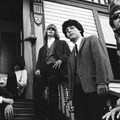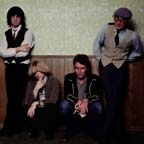 A Che Underground exclusive: San Diego legends The Nephews revisit four decades of music ahead of their Feb. 18 appearance at The Casbah San Diego for A Che Underground Midwinter Masque. Book your tickets early and often!
A Che Underground exclusive: San Diego legends The Nephews revisit four decades of music ahead of their Feb. 18 appearance at The Casbah San Diego for A Che Underground Midwinter Masque. Book your tickets early and often!
The Nephews began as a comedy act in middle school around 1980. The original name was Ceilings and Floors, but we changed it to The Nephews (which has the same amount of meaning as “Ceilings and Floors”) around 7th grade.
We were very heavily into music, started playing as a rock band in high school, and were able to start playing club shows fairly quickly. Actually, our very first show outside of inland North County where we grew up was at the Che Cafe in 1984. We supported Manual Scan at Club Zu pretty early on.
 Eric Cullen (Nephews keyboardist, 1989): “The first memory I have of The Nephews is of them playing during lunchtime at Poway High School. The
Eric Cullen (Nephews keyboardist, 1989): “The first memory I have of The Nephews is of them playing during lunchtime at Poway High School. The
thing that immediately hit me about their music was how sophisticated their sound was, considering this was high school and all. Their harmonic language was dense, their chord progressions rather abstract, the lyrics obtuse. The Nephews’ music seemed advanced and not really belonging to the time, which was 1984 or ‘85. They were mining their own sound, and to this 17-year-old it sounded great. They had an air of ’60s psychedelia but were in touch with current underground bands like R.E.M., Minutemen and Pere Ubu. They also had a slight Zappa/Beefheart side about them, as well.”

